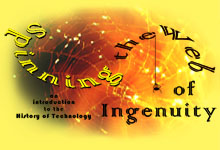
University of California, Irvine
Instructor: Dr. Barbara J. Becker

|
Lecture 14. Shrinking Space
|
|
|
|
by Robert Hooke May 21, 1684 I wish to suggest a Method of communicating at a Distance, not by Sound, but by Sight. I say it is possible to send Information from any high Place to any other that lies in Sight of it, even if it is 30 or 40 Miles distant, in as short a Time almost, as a Man can write what he would have sent. It is also possible to receive an Answer as soon as it can be written down on Paper and sent. By the Help of three, four, or more such high Places, visible to each other, lying in a straight Line, it is possible to send Information almost in a Moment to two, three, or more Times that Distance with as great a Certainty as by Writing. To do this, we must use a recent Invention.... The Eye must be assisted with Telescopes so that whatever Characters are exposed at one Station, may be made plain and distinguishable at the others observing it. First, if the Stations be far distant, it will be necessary that they
should be high, and lie exposed to the Sky, so that there be nothing to
hinder the Distinctness of the Characters which are to appear dark....
Next there must be a convenient signalling device to communicate any Thing with great Ease, Distinctness and Secrecy. There must be, therefore, at least as many distinct Characters as there are necessary Letters in the Alphabet that is made use of. And those must be either Day Characters, or Night Characters: If they are to be made use of in the Day-time, they may all be made of sturdy pine board ... big enough to be visible through the Telescope of the next Station. Any one of the Characters may signify any one Letter of the Alphabet, and the whole alphabet may be varied 10000 Ways; so that none but the two end Correspondents shall be able to discover the Information that has been sent....
If the Characters are for the Night, then they may be made with torches, or other Lights arranged in a certain Order, which may be covered and uncovered, according to the Method of the Character agreed on.
|
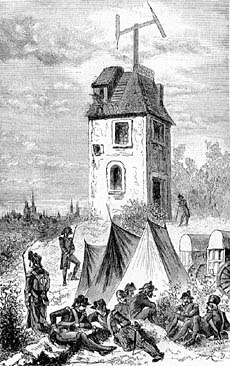
120 towers like this one were built over a distance of 475 miles between Paris and Toulon, messengers could transmit a signal in as little 10-12 minutes. |
Another long distance signaling device was developed in the early 1790s
by Claude Chappe (1763-1805). Unlike Hooke, whose signal code was
based on alphabetic characters, Chappe devised a complex code for common
words and phrases.
On August 30, 1794, the first official message to be sent over this system took about a half hour to reach Paris. |
Transportation
|
1769 |
Frenchman Nicholas Joseph Cugnot (1725-1804) builds a steam-operated vehicle designed to travel on common roads. |
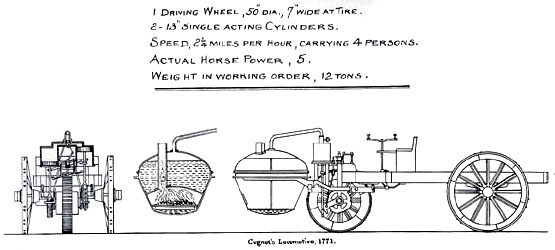 |
|
1788 |
Edinburgh banker, Patrick Miller (1731-1815), commissioned engineer, William Symington (1763-1831) to build a steam engine to power a boat. |
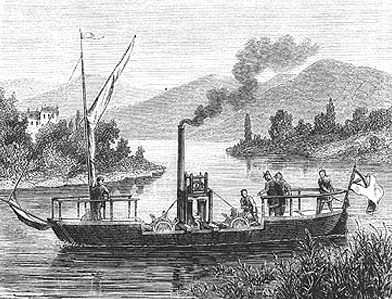 |
|
1789 |
American John Fitch (1743-1798) built several working steamboats and operated them on the Delaware River near Philadelphia. In one of his designs, shown below, the steam engine moves four banks of oars to propel the boat like a canoe. |
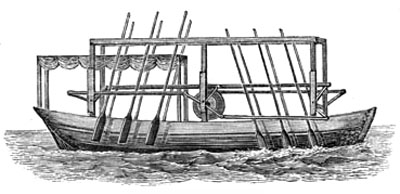 |
|
1801 |
William Symington designed and built a steam engine for the canal barge Charlotte Dundas. Although this ship performed as expected on its maiden voyage through Scotland's Forth and Clyde Canal, it was abandoned en route for fear its wake would damage the banks of the canal. On a trip to Scotland, American Robert Fulton (1765-1815) saw and sketched the Charlotte Dundas, using his observations to guide his own steamboat building endeavors. |
 |
|
|
|
American Oliver Evans (1755-1819) designed, built and operated a steam-operated amphibious vehicle. |
|
|
|
1804 |
Engineer Matthew Murray of Leeds, England creates the first steam-operated vehicle to run on timber rails. |
 |
|
1807 |
Fulton's steamboat--the Clermont, or North River--could ferry 60-90 passengers on the Hudson River between Albany and New York City (150 miles) in 30-36 hours. |
 |
|
1807 |
Richard Trevithick (1777-1833) built a circular railway in London's Torrington Square. He charged admission to see and to ride on his steam carriage, the Catch-Me-Who-Can, which weighed 10 tons and could travel at speeds up to 15 mph. |
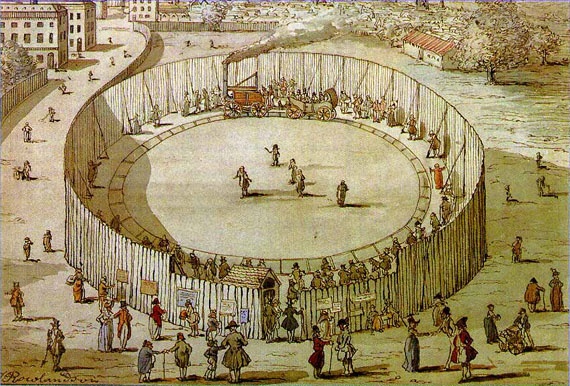 |
|
1812 |
John Blenkinsop (1783-1831), owner of the Middleton Colliery, teamed up with Matthew Murray to build a steam-operated railway to transport coal about 3 miles to Leeds. The engine began running on August 12, 1812 and became the first commerically successful steam locomotive. It could haul as many as 30 loaded coal cars at a speed of 3 mph. |
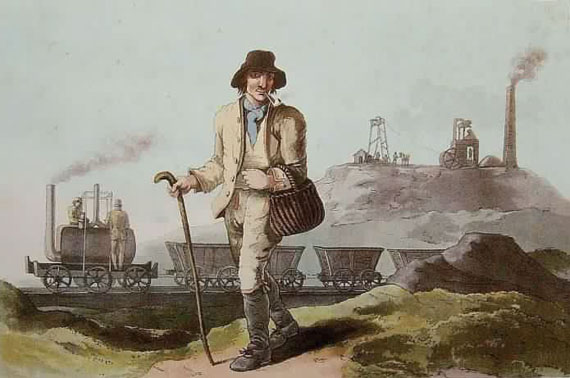 |
|
1819 |
SS Savannah, was a full-rigged sailing ship that was outfitted with a steam engine and paddlewheels for the purpose of making the first transatlantic crossing. The Savannah, carrying no passengers or cargo, left Savannah, Georgia on May 26, 1819 for St. Petersburg, Russia. Even though the steam engine was operated sparingly, its coal supply was nearly exhausted by the time the ship arrived in Ireland, and the crew had to take on more for the rest of the journey. The Savannah made stops in Liverpool, Helsingør, Stockholm, and Kronstadt before arriving in St. Petersburg 50 days after leaving the US. The ship was much admired wherever it went, but was a failure commercially. |
|
|
|
|